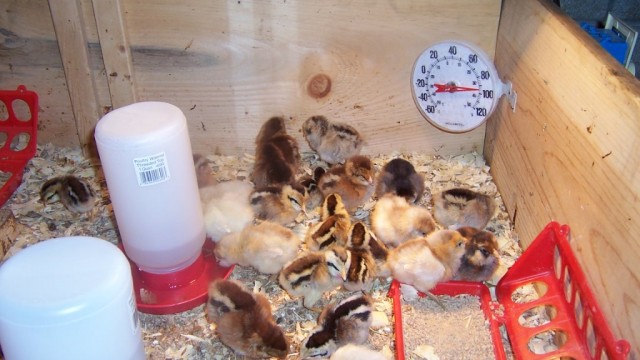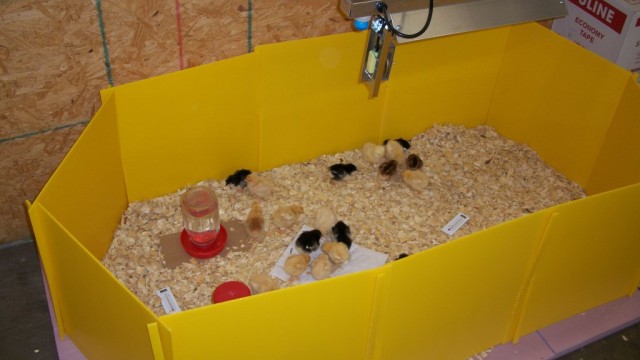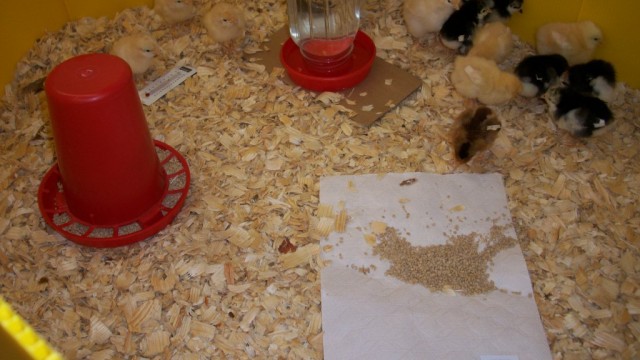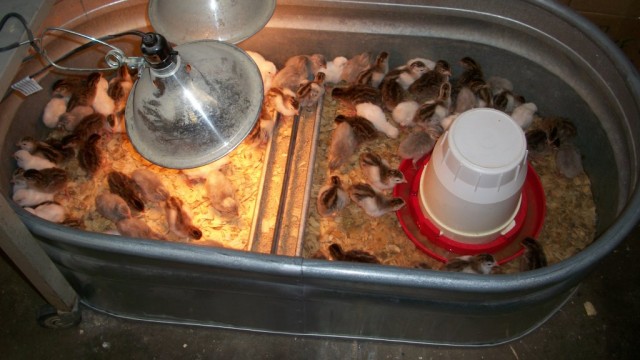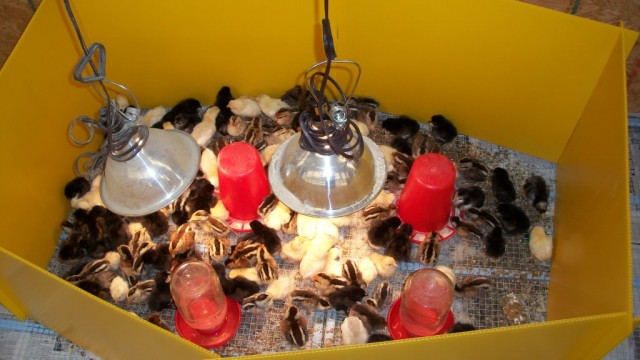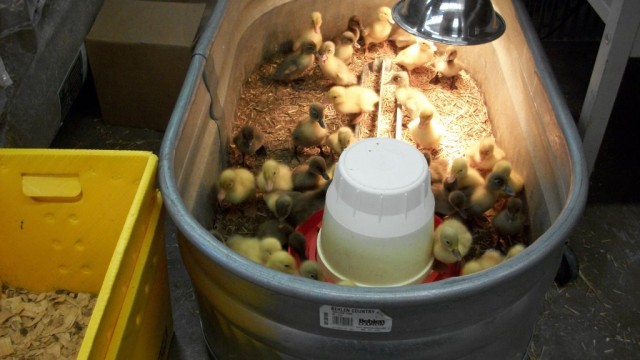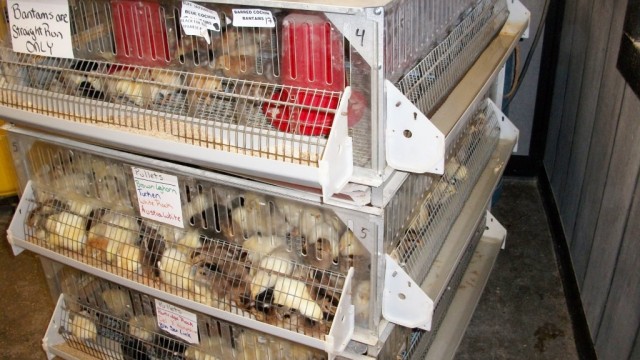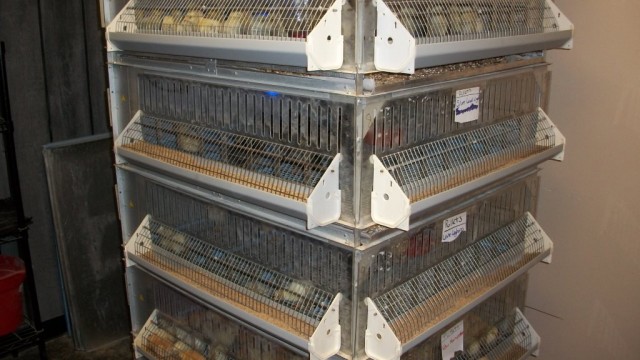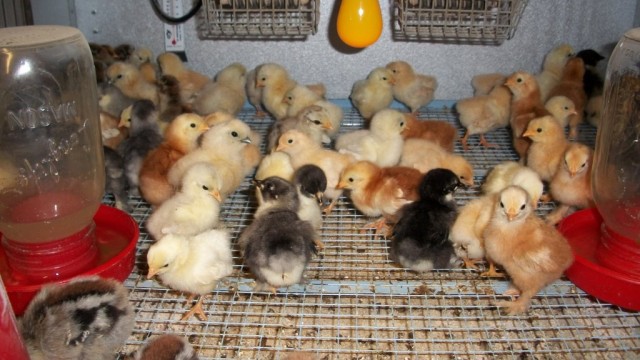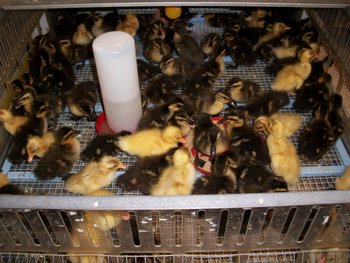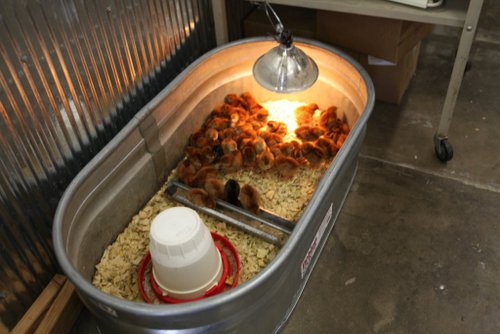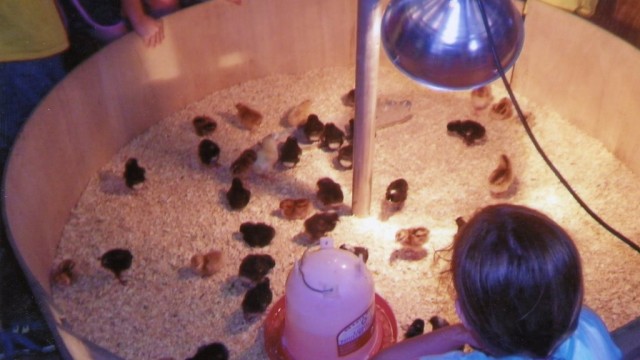
Download or Print Cackle Hatchery’s Guide to the Care of Baby Chicks (Pamphlet)
Download of Print “The Care of Baby Chicks” eBook
Cackle’s Safe Handling of Poultry Poster (Salmonella Safety)
Table of Contents
- Arrival
- After 4 Weeks
- Baby Turkeys & Peafowl
- Ducks & Goslings
- Quail, Pheasants & Guineas
- Safe Handling of Poultry
- Samples of Brooding Chicks
- The Doctor is In!
- Poultry Diseases/Sickness and Treatments/Management
- Fast Tips for Mail Ordered Chicks that may have had a stressful trip
- Session with the Chicken Doctor
Arrival Date
Important Care Requirements Upon Arrival:
-
- You must provide a heat source capable of maintaining a warm zone of 100-105°F in the brooder for the first 48 hours.
- A cooler zone must also be available so chicks can regulate their temperature.
- We do not recommend using heat plates for the first two weeks of raising mail-ordered chicks, as they do not reach a sufficient temperature for chicks that have been in transit.
- Puppy pads are not recommended as bedding for poultry.
- Please review our all our “Care of Chicks on Arrival” instructions below to ensure proper setup and care.
One thing to always keep in mind when you raise chicks year after year; you will always run into something different. Just because you did it one way this year and didn’t experience any problems does not mean you will not experience problems in the future. We have been doing this since 1936 and still experience new and different issues each year. Please follow our basic instructions and also feel free to contact us for further information.
First Day Instructions:
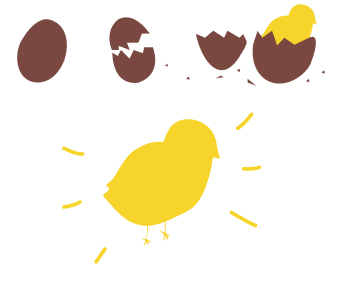
- Be sure you have some flexible time to pick up your birds from the post office and make plans to be home the first day and night to watch them. Sometimes the chicks do not arrive when expected.
- Have your brooder area set up and heating source tested. This will ensure the birds can go straight into the brooder as soon as they arrive.
- Refrain from handling or playing with the birds the first 24 hours. This is an extremely important step. Your chicks will need the time to calm down from the stress of the trip.
- First couple of weeks should be a room that is between 60-80° constant temperature with no known draft.
We recommend for the 1st day to have the drinking water at 90-105 degrees (or very warm). The birds are small with little weight on them upon arrival. They will drink a lot of water, which if too cool, will rapidly reduce their body temperature, put them into shock and make them sick.
- When placing the birds in the brooder, take each in your hand and hold their head between your fingers. Do a quick dip of the chick’s beak into the water, and then let go of the chick. You should see the chick look up and start swallowing. Do not repeat once the chick has grasped the technique.
Normally, the chicks will NOT start to drink, eat, or move around until their body has warmed. At floor level, the temperature needs to be 100°-105°F directly under the heat source for the first few days. Then the temperature should be lowered to 100°F for the rest of the week.
Be sure to have plenty of room available for the chicks to walk away from the heat source in case they become too warm. Lay paper towels on the brooder floor sprinkled evenly with food. This has been known to help them recognize their food. Remove the paper towel once the chicks catch on and show interest in the feeder. This method should ONLY be used the first day.
You can find more baby chick care instructions and videos at cacklehatchery.com

Heating Instructions:
Always use brand new bulbs. We have found that using a drop light with reflector shield is a good source of heat to get them started for the first couple of critical days.
- Use a 125 watt bulb.
- A guide is one brooder lamp per 25 chicks.
- Hang a reflector light from something secure to ensure that is does not fall and hurt the birds or burn anything. Lower or rise the lamp to acquire the current temperature at floor level.
- Make sure to use a thermometer at floor level under the light to be accurate.
- Again, make sure there is plenty of room for the chicks to walk away from the heat source.
From days 3 through 7, the temperature in the brooder should be 95° to 100°F at floor level. Equally important, is enough space for a cool zone on the other side of the brooder. See Space for a visual on comfortable chick behavior.
MAIL ORDER CHICKS REQUIRE HEAT BULB NOT HEAT PLATE
Mail order poultry is entirely different than poultry hatched out in an incubator at home or under a hen. Mail order poultry require much more heat initially for the first 2 weeks than a heat plate generally can provide. Mail order chicks need their body temperature rapidly and immediately and artificially warmed up to 104 degrees (which is a mother hens’ temperature). Most heat plates do not do this. The chick does not have the ability to generate enough of its own heat immediately on arrival and sustain its own temperature. About the time of arrival, the chick is losing it’s (mother nature protection). Generally, after the first 2 weeks of using a heat lamp you can switch to a heat plate that does not put out any light so the chicks can adjust to a more circadian rhythm. They no longer need light 24/7 for a fast start for eating and drinking and now the 24/7 light will stress them at this point. Blog “How to care for baby chickens delivered by mail”. Blog “How to care for bantam chicks shipped by mail”.
EXCEPTION!
The temperature may need to be slightly higher (+5 Degrees) for Bantams and other small bodied birds. Whereas the temperature may need to be slightly lower for Jumbo Cornish Cross as they grow faster than others and will overheat more quickly.
After two weeks, it is best to provide a heat source other than heat lamps, such as an infrared hanging heater or a radiant heat. It is better, because the constant bright light from bulbs can stress the birds and cause health issues and picking. You will have to watch the birds for piling up during this transition.
Feed First Day Instructions:
- Use a chick starter/grower feed.
Put the feed in troughs low enough so that the chicks can see and reach it easily. Use one foot of trough feeder or one round feeder for every 25 chicks. Never let the chicks run out of feed.
Adding crumbled boiled egg yolk on top of the feed gets the chicks off to a good start and will also encourage them to start eating feed right away. It is important to remove all uneaten boiled eggs after 2-4 hours. We do not recommend adding grit, because the chick starter/grower feed is formulated for what the chicks need to digest the food. Chicks should stay on a full feed ration of chick starter/grower until they have laid their first egg.
EXCEPTION!
You should limit feed intake on the Jumbo Cornish Cross starting at the 14th day by taking the feed away at night. This seems to help slow the growth of the bird just enough to allow the skeletal structure of the bird to catch up with their fast muscular development.

Start with a 1 gallon low profile chick waterer for each group of 25-50 chicks. Do not medicate water the first eight hours.
The first water given to new arrived chicks should be very warm at 90-105°F. The next 2 days, the water should be warm, and by the 3rd day it should be room temperature.
Your chicks will be thirsty when they arrive in the mail. A taste of water right away will help them find more water soon. Dip the beak of each chick into the warm water before you turn your chicks loose.
Most baby chick loss is caused by the chick not starting to eat or drink due to them being too cold to move. Never let your chicks run out of water.
SPECIAL SITUATIONS AFTER THE CHICKS ARRIVE
If the Chicks Had a Hard Trip:
If the birds are lethargic, acting listless or have manure pasting up try this:
4 tablespoons of Raw Organic Apple Cider Vinegar (with the mother) to every quart of water for 3-5 days. To help chicks recover from a rough trip hardboil a few eggs and take just the yolk and crumble over their feed to help give them an energy boost.
The stress of shipping can also cause the manure to stick to the back of the chick. If the chick becomes backed up, it could result in fatality. It is important to remove this daily. Pull off gently using a warm wash cloth.
Medication:
Another option to help alleviate these symptoms is Amprol. You should be able to find it at your local feed store or at cacklehatchery.com. Please view our website for videos regarding the use of medication.
Space:
- Try to provide ½ square foot per chick at the start.
For starting 50 chicks, use a draft shield and make a circle about 5 to 6 feet across. For 100 chicks, make a circle 7 to 8 feet across. The area needs to have a heater at one side of the brooder to warm up, and an area to cool off and play. Warm chicks will spread out evenly and begin exploring their new home.
CHICK BEHAVIOR BEST INDICATOR OF COMFORTABLE TEMPERATURE
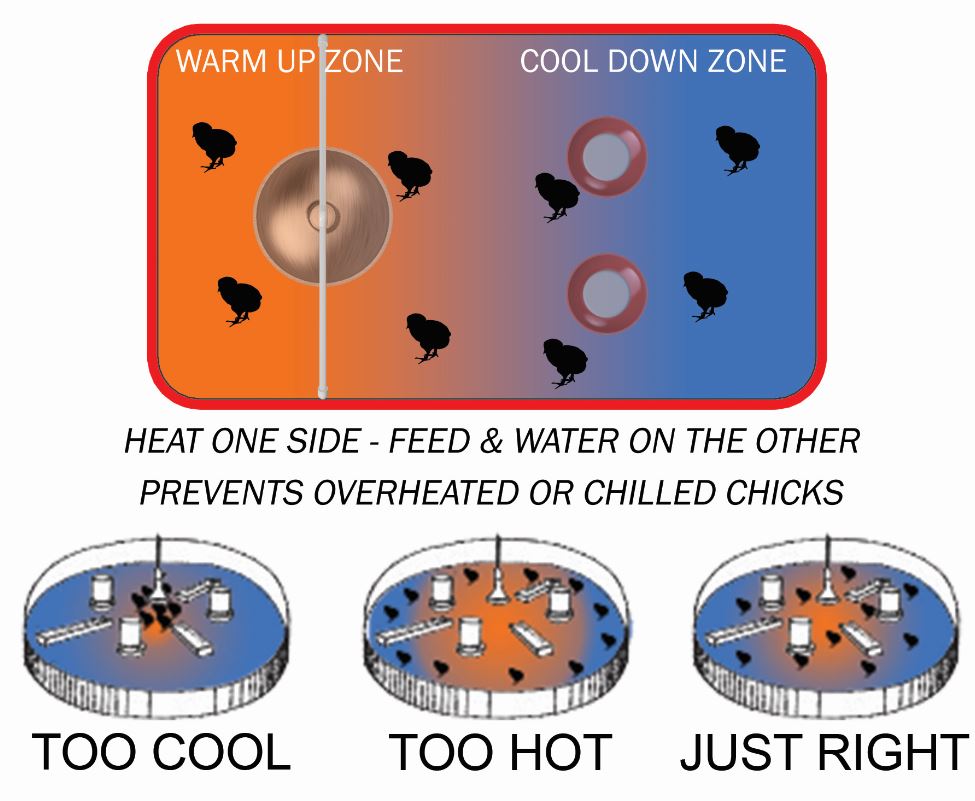
Litter
Large pine shavings will make a good litter. Rice hulls, dry straw, or hay can also make good bedding. Do not use small shavings or sawdust. The baby chicks that are learning to eat will eat it and possibly die. Do not use sand, because it can also be eaten by the birds, and cause their craw to have impaction. This will cause health problems and/or death.
The pine shavings should cover the floor and be at least 1 to 2 inches thick. On concrete floors, use 3-5 inches of bedding.
Do not use cedar or cypress shavings as they are highly toxic to poultry.
Picking
It is very common for birds to use their own beak to groom or pick themselves. The oil gland above the tail provides oil for their beak to groom their feathers. New feathers are full of blood and if pulled out will bleed some. This can attract other birds to pick at this area.
Baby chicks are prone to pick each other for numerous reasons. Some of these reasons include, if the temperature is too hot, the area is too crowded, they are without fresh air, or even something as simple as when they are bored. Bright lights can also cause them to pick. Having lights on 24 hours a day can cause stress; changing to a red light will help.
An ounce of prevention is worth a pound of cure when it comes to picking. When the birds are picking for no apparent reason, you can try to calm their boredom with Vicks Vapor Rub. You can also consider roost, climbing structures or hay to pick at, to help reduce feather picking.
Chunks of grass sod can also be set out for them to pick at.
To treat chicks that have been injured due to picking, smear some type of menthol ointment on the area that has been injured, and keep up the treatment until healed.
After 4 Weeks
1 Increase floor area to 3-4 square feet per bird.
2 Increase feeders to provide 2 ½ to 3 inches of space per bird.
3 Increase waterers to one 5-gallon fount per 100 chicks or install a nipple system.
4 Install roosts at back of brooder area. Start roost poles low and gradually raise from floor.
5 Allow 4 inches width per bird and 6 inches apart.
6 Open windows during the day. Leave only partly open at night.
7 Prevent water puddles around founts.
8 Place founts on low wire platform. Move founts periodically to new locations to keep area dry so you can prevent bacteria from forming and Coccidiosis.
9 Birds can range outside on warm, sunny days but only if a clean range is available.
BEWARE OF PREDATORS! INCLUDING DOGS AND CATS!
Baby Turkeys & Peafowl
Use the basic instructions above but watch more carefully as turkeys and peafowl tend to chill quicker than chicks. They can also pile up for no reason. Keep a close eye on them to prevent this. Baby turkeys and peafowl are known to be somewhat dumb; therefore, you must make sure they know where the feed is.
It is helpful to put colored marbles in the water founts and sprinkle some feed on paper towels for the first few days. If they do not get started eating and drinking properly, this will lead to “starve outs”. If the turkeys or peafowl show any sign of diarrhea use the Raw Organic Apple Cider Vinegar (with the mother) formula provided above in the Special Situations After The Chicks Arrive. DO NOT use any slick paper for bedding for turkeys and peafowl. They can easily slide on slick surfaces, (they lack the muscle in the leg area that keep their legs from spreading apart) which can result in spraddle-legged poults.
We also recommend a few standard size baby chicks to be raised with the turkeys and peafowl in the beginning. The chicks will teach the turkeys and peafowl how to eat and drink. Peafowl are very difficult to raise, and we do not offer any guarantee or refunds; however, we will be happy to help with any questions about care if you call us.
Ducks & Goslings
Follow the same care as for baby chicks except, ducks and goslings do not need as much heat as baby chicks because of their rapid rate of growth. They will require more care in that they are messier with water founts.
WARNING: DO NOT MEDICATE WATER FOR DUCKS OR GEESE! The ducks and geese should be raised separate from the chicks and turkeys.
Make sure the water fount and base are sturdy, as you do not want it knocked over into the litter. In extreme shipping situations, water may be given in ten-minute intervals for the first hour – however, no feed should be given within that first hour. This will help to prevent water logging. Never offer food without water. Ducks and geese can be turned outside at an earlier age than other birds depending on the weather. Goslings love to eat grass and weeds and will begin grazing as soon as they are turned out. DO NOT let baby ducks and goslings out on a pond as they will drown since they do not have a mother to help them. Their down absorbs water. Once they have feathered out, (2-3 months depending on the breed) they can go on the pond. Ducks and geese can be raised together; however, do not raise them with any other chickens, turkeys or other birds. Because the ducks and geese are messier with water, they can cause your other birds to get sick and possibly die. Once they are grown, ducks and geese can free range with other birds as long as the size of the area permit it.
Quail, Pheasants & Guineas
Use the basic instructions for chicks; however, watch them more carefully for piling up. The temperature may need to be slightly higher for the smaller bodied birds. The temperature must be closely monitored.
A thermometer is highly recommended. Special game bird water founts can be purchased. If you are using regular chick founts, add clean gravel or marbles to take up space so they do not drown or get chilled. You should use a colored bulb to help control cannibalism. We do not recommend wire flooring at a young age, because it is a good possibility that their legs will get caught in the wire.
Safe Handling of Poultry
Live animals and pets can be a source of potentially harmful microorganisms (germs including salmonella and bacteria). Therefore, precautions must be taken when handling and caring for them to prevent fecal/oral transmission among people. Children should be supervised as they handle animals and pets to make sure they do not put their hands or fingers in their mouth. Always wash your hands with soap and warm water after handling animals.

For information and free materials, contact “United States Department of Agriculture, Animal and Plant Health Inspection Service” at http://healthybirds.aphis.usda.gov
417-532-4581
P.O. Box 529 Lebanon, MO 65536
www.cacklehatchery.com
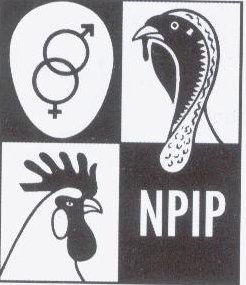
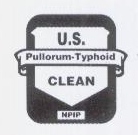
Samples of Brooding Chicks
The Doctor is In!
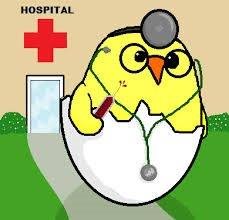 “My Chickens Are Sick” / “I Need A Chicken Doctor”
“My Chickens Are Sick” / “I Need A Chicken Doctor”
Although Cackle Hatchery® is not a veterinarian we can provide you with some excellent information and chicken health advice below:
- Start out by reading Cackle Hatchery’s FAQ‘s , you will find many common questions and answers about chicken health concerns.
- Check out many of our books about chickens and Chicken Health Handbook.
- Check out Cackle Hatchery’s Poultry Diseases/Sickness and Treatments/Management on our link page.
- Session with the chicken doctor.
Poultry Diseases/Sickness and Treatments/Management
Fast Tips for Mail Ordered Chicks that may have had a stressful trip
- Schedule your day so you can be around to monitor the chicks for the first 24 hours, and read the complete instructions “Care of Baby Chicks” before you receive the chicks.
- Have the brooder already heated to 100° because your chicks will not eat or drink unless their body temperature is 100°. Make sure there is room for them to get away from the heat once they get warm.
- Use 98° warm water for the first 2 hours, and dip their beaks in the water. Sometimes a few chicks lack the will to thrive, so you will need to dip their beaks numerous times throughout first 3 days.
- If using a wire mesh floor, put paper towels down for first 2 days so their legs will not get stuck in the wires.
- Medicated feed does not have enough Amprol in the feed and we recommend doing a 7 day dose of Amprol in the water after the first day of arrival. To quote Ben Franklin, “An ounce of prevention is worth a pound of cure.” Do not give vitamins when treating with Amprol because the B1 (thiamin) will negate the Amprol treatment. After treatment we recommend keeping probiotics in the water to populate good bacteria in the gut to help aid digestive order. Always change out new water mixture daily.
- If your chicks arrive with eyes shut and eye lids swelled or red, this is a very rare issue. Sometimes when chicks get stressed during shipping they peck at the shining black eye that stands out on light colored chicks. If this happens, dampen the eye 6 times a day with moist cloth and use triple antibiotic ointment on the skin part of eye. Generally it takes about 5 days for the eye to heal and be clear.
- Manure pasting up on the chicks rear end will back up the chicks’ bowels and kill them. If this happens it is important to remove it in the morning and evening by using a moist cloth and gently wiping it off. If the chick continues to have the issue after 2 days you may need to put some triple ointment on the red irritated skin. Another idea is to take the chick starter feed and put it in a regular household blender and turn the chick starter crumble feed into a mash/powder. This will aid in the digestion and reduce pasty butts on the chicks for first 3-4 weeks.
Blog “how to care for baby chickens delivered by mail”. Blog “how to care for bantam chicks shipped by mail”.
One time consult fee with Peter Brown AKA “THE CHICKEN DOCTOR,” a chicken expert with over 50 years of helping thousands of poultry enthusiasts with their poultry problems. Once paid we will send you a paid invoice with the phone number to call for your chicken problem consultation.
As a general rule Cackle Hatchery can help you with your baby chick care issues and the paid consultation can help you with started or grown poultry issues, diseases, vaccinations or more detailed chicken care issues. The Chicken Doctor
There is no refund of the $50.00 fee paid and it can be used within 1 year of purchase (Monday-Friday).

